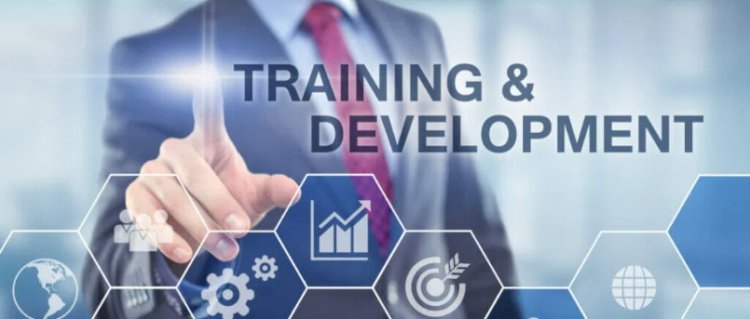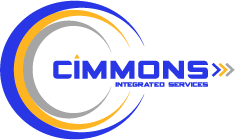What is Training & Development?

Training & Development
Training and development refers to educational activities within a company created to enhance the knowledge and skills of employees while providing information and instruction on how to better perform specific tasks.
Training is a short-term reactive process meant for operatives and process while development is designed continuous pro-active process meant for executives. In training employees' aim is to develop additional skills and in development, it is to develop a total personality.
In training, the initiative is taken by the management with the objective of meeting the present need o fan employee. In development, initiative is taken by the individual with the objective to meet the future need o fan employee.
-
What is the purpose of training and development in organizations?
The reason why training is absolutely essential for any business is -
Lowers Attrition
Training is one of the best ways to value your employees. It shows them that you are as invested in their well being and growth as they are in the your growth as a company. Employees who are looked after will never want to look elsewhere.
Prepares for upcoming challenges
Training can be a pre-emptive step to train employees for expected/unexpected changes in the industry. In times like ours when trends change constantly under the influence of online evolution, keeping our teams prepared just makes good sense.
Fosters Leadership
There is no better way to create future leaders than to train the best bunch. This will also lead to a clear career path for employees preventing attrition and dissatisfaction.
Growth of the company
Any company dedicated to training its workforce will only prosper and move forward. The employees are a major part of a company's assets and taking care of them will mean taking care of the organisation.
-
What are the types of training and development?
The types of training programs are -
- Technical training is a type of training meant to teach the new employee the technological aspects of the job.
- Quality training refers to familiarizing employees with the means of preventing, detecting, and eliminating non-quality items, usually in an organisation that produces a product.
- Skills training, the third type of training, includes proficiency needed to actually perform the job.
- The fourth type of training is called soft skills training. Soft skills refer to personality traits, social graces, communication, and personal habits that are used to characterize relationships with other people.
- Professional training is a type of training required to be up to date in one’s own professional field.
-
What are the examples of training and development?
The examples of training and development could be that tax laws change often, and as a result, an accountant must receive yearly professional training on new tax codes. Lawyers need professional training as laws change. A personal fitness trainer will undergo yearly certifications to stay up to date in new fitness and nutrition information. In a consulting business, technical training might be used so the consultant knows how to use the system to input the number of hours that should be charged to a client. In a restaurant, the server needs to be trained on how to use the system to process orders.
-
What are the benefits of training and development?
The benefits of training and development are -
- Employee training and development increases job satisfaction and morale among employees.
- Reduces employee turnover.
- Increases employee motivation.
- Increases efficiencies in processes, resulting in financial gain.
- Increases capacity to adopt new technologies and methods.
- Increases innovation in strategies and products.
-
What is the best practice for training and development of employees?
Some of the best practices for training and development of employees are -
- Align training with management’s operating goals - Management always has operating goals like better performance, productivity, quality, or customer satisfaction, to name a few. Once you know the goals, you can design targeted programs.
- Survey your employees first - The best source of information about organisational performance and needs are the current employees. They know a lot about what’s going on and what, if anything, should be changed.
- Consider different learning styles and methods - While creating learning content and courses for your L&D staff, keep in mind that they’ll each have different learning styles and methods too, the same way the rest of the employees do. Make sure you have learning materials available for each type of learning style.
- Measure results - Successful companies measure outcomes to make sure they continue to get the biggest bang for their buck.
-
What is the most challenging aspect of leadership training and development?
One of the most challenging aspects of leadership training and development is ensuring strategic alignment between training programs and business goals. It’s important not just to look at business goals but also why the organisation has those goals.
-
What is training and development in HRM?
Training and development is one of the main functions of the human resource management department. Training refers to a systematic setup where employees are instructed and taught matters of technical knowledge related to their jobs. It focuses on teaching employees how to use particular machines / software's or how to do specific tasks to increase efficiency.
Whereas, development refers to the overall holistic and educational growth and maturity of people in managerial positions.
Training and development in human resource management is the foundation for getting the best out of each and every employee.
-
How is employee training and development integrated with talent management strategies?
Talent management is defined as the methodically organized, strategic process of getting the right talent onboard and helping them grow to their optimal capabilities keeping organisational objectives in mind.
The process thus involves identifying talent gaps and vacant positions, sourcing for and onboarding the suitable candidates, growing them within the system and developing needed skills, training for expertise with a future-focus and effectively engaging, retaining and motivating them to achieve long-term business goals.
Learn more about Talent Management Strategy To Create a Sustainable Workforce. -
Why do companies spend money on training and development?
Companies spend money on training and development as -
- Training opportunities increase employee retention.
- Training is cheaper than replacing.
- Regular training is a must for remaining current with industry trends and technologies.
- When it comes to filling an open position, training a current employee in a new skill and moving said person between roles or departments is a potential cost savings rather than hiring a new one.
-
What is difference between training and development vis-a-vis learning and development?
Training and Development - It is a learning process in which employees get an opportunity to develop a skill, competency and knowledge as per the job requirement. It can be referred to as job focused

 Anupam Upadhyay
Anupam Upadhyay 












